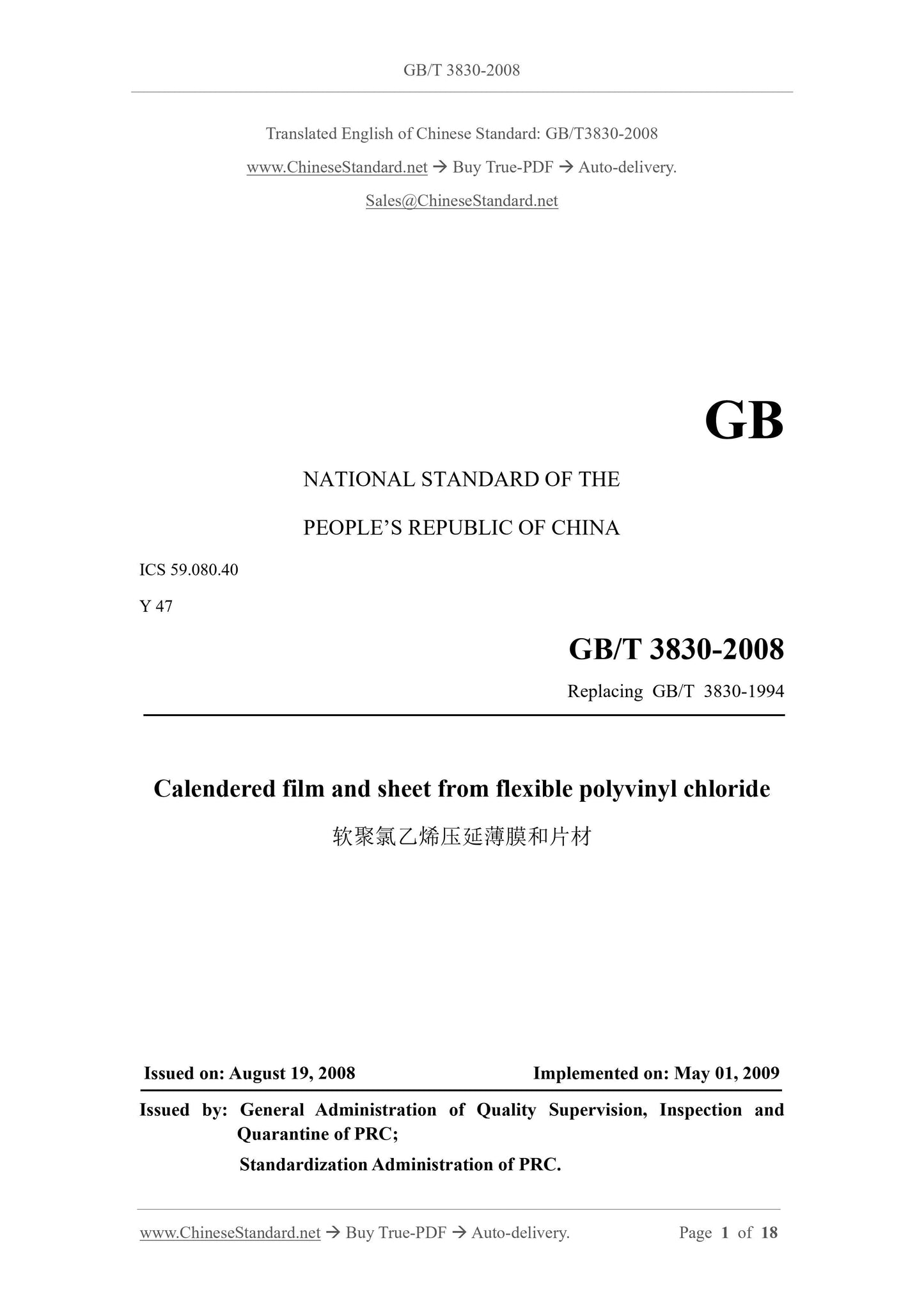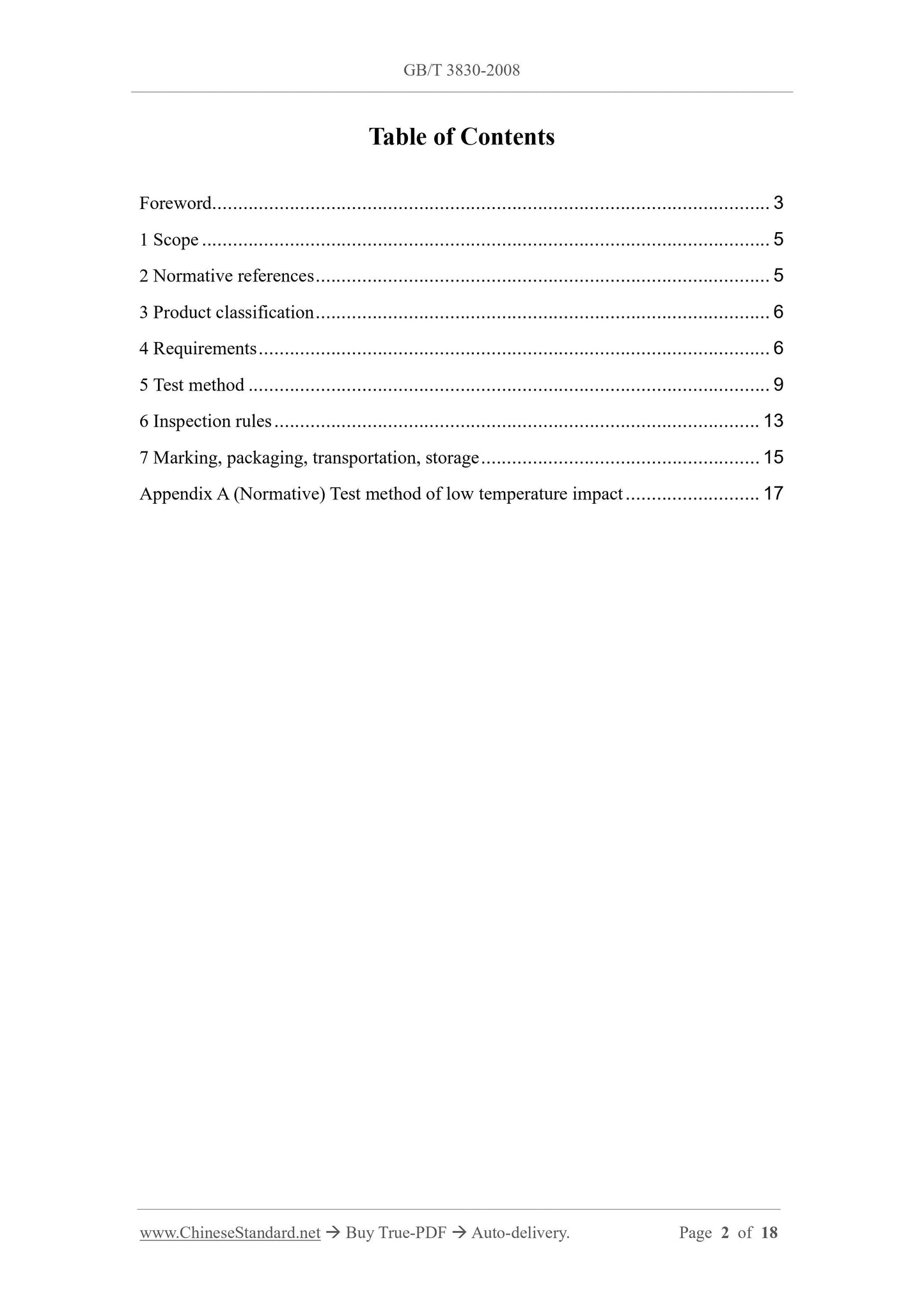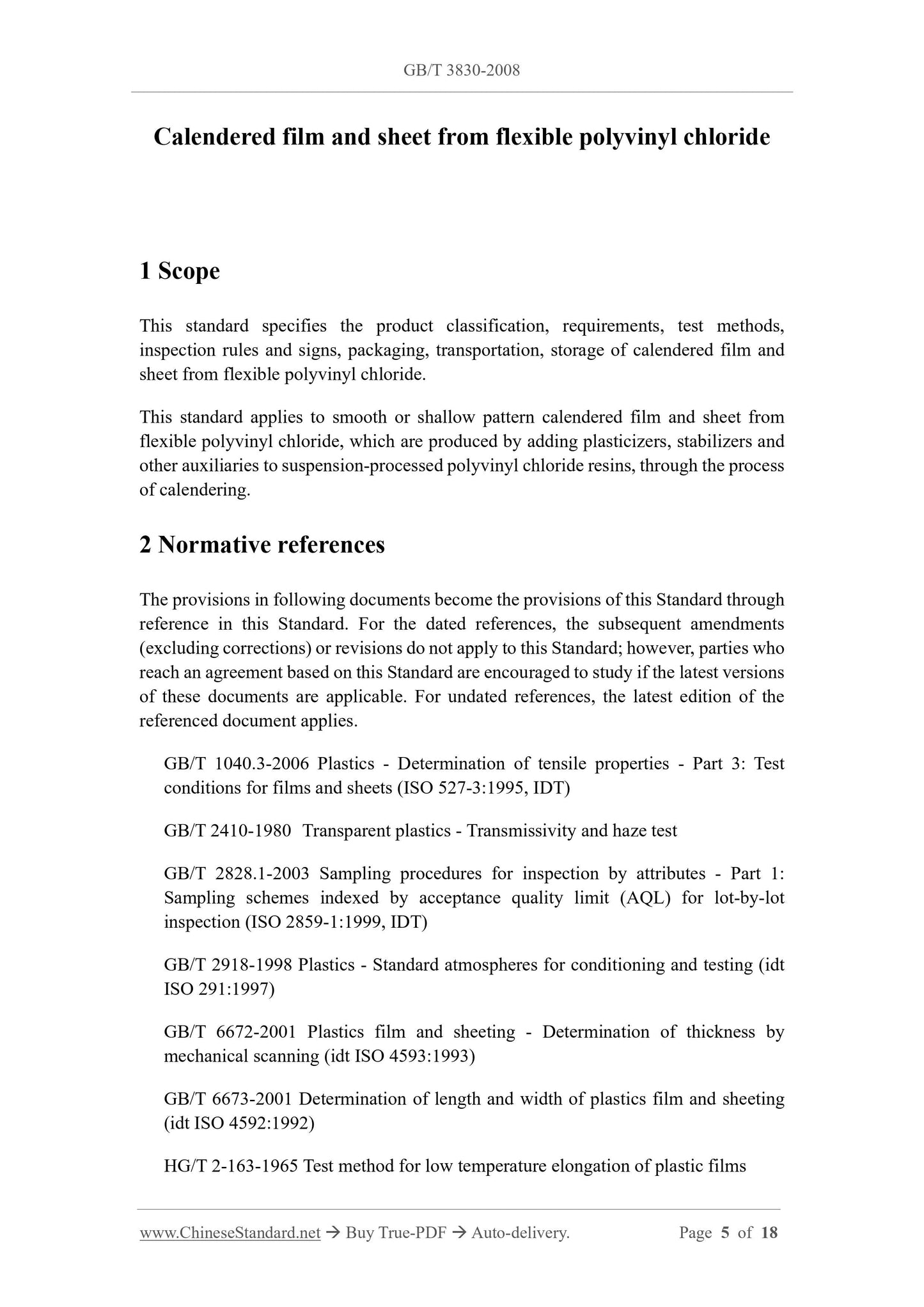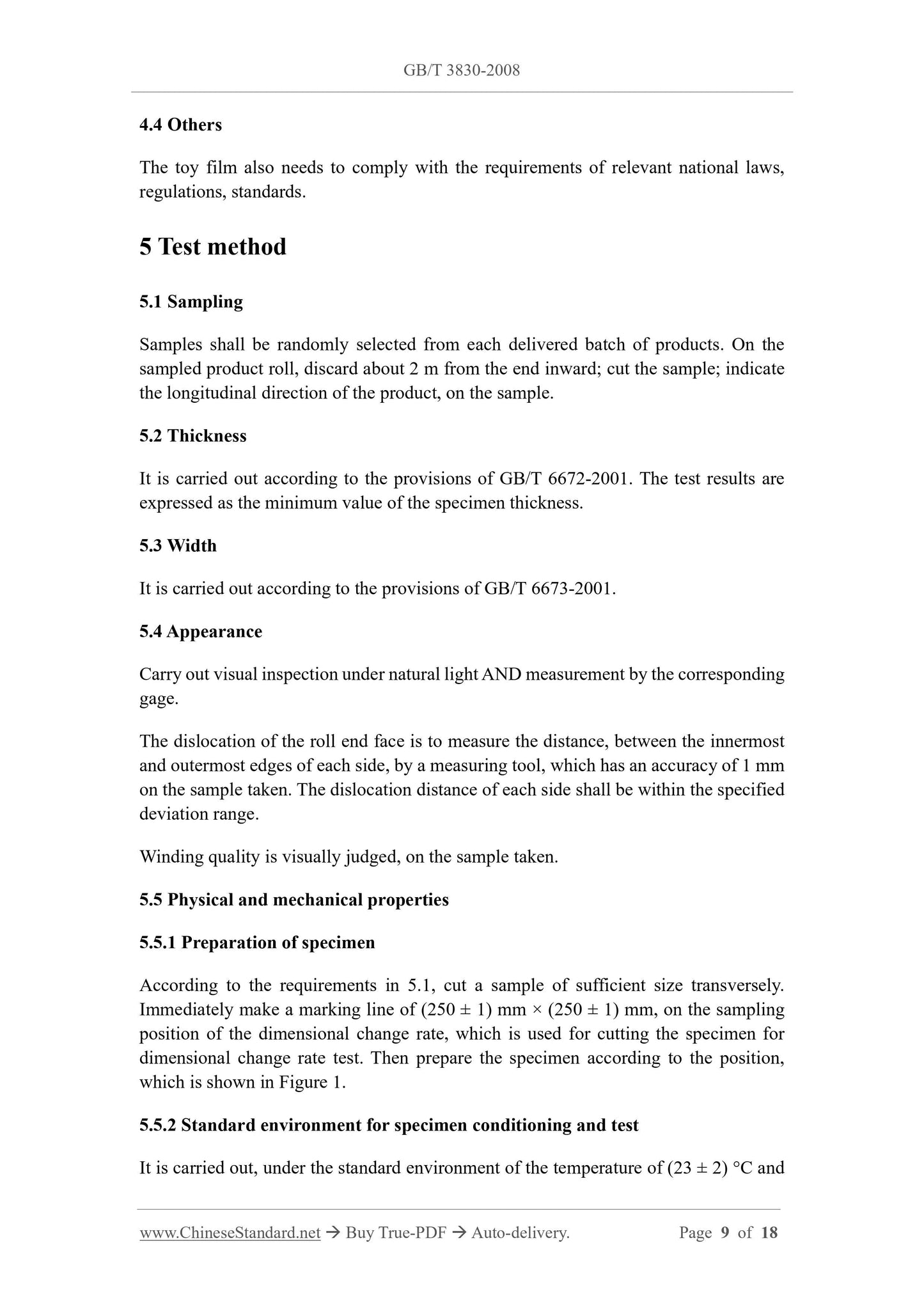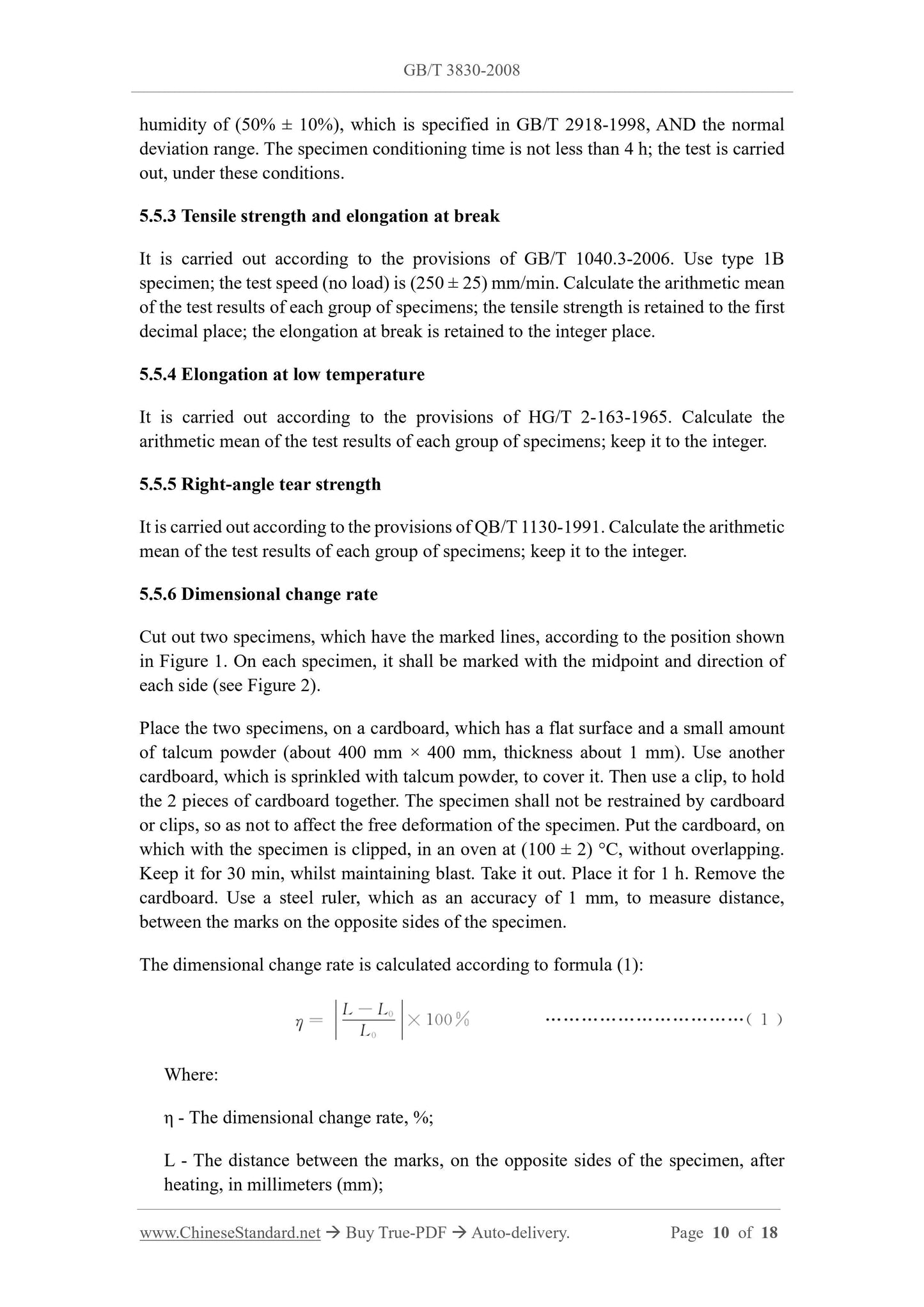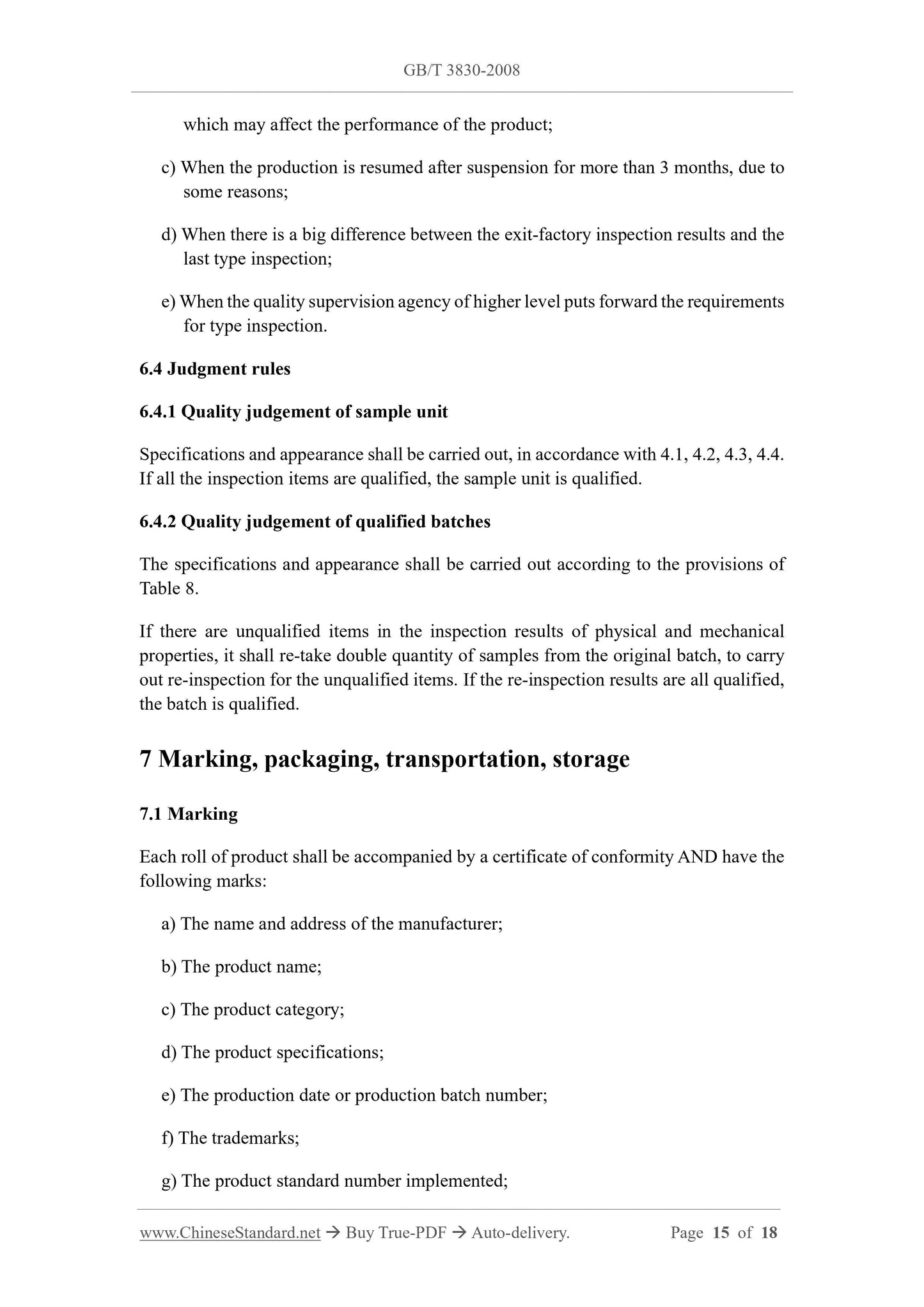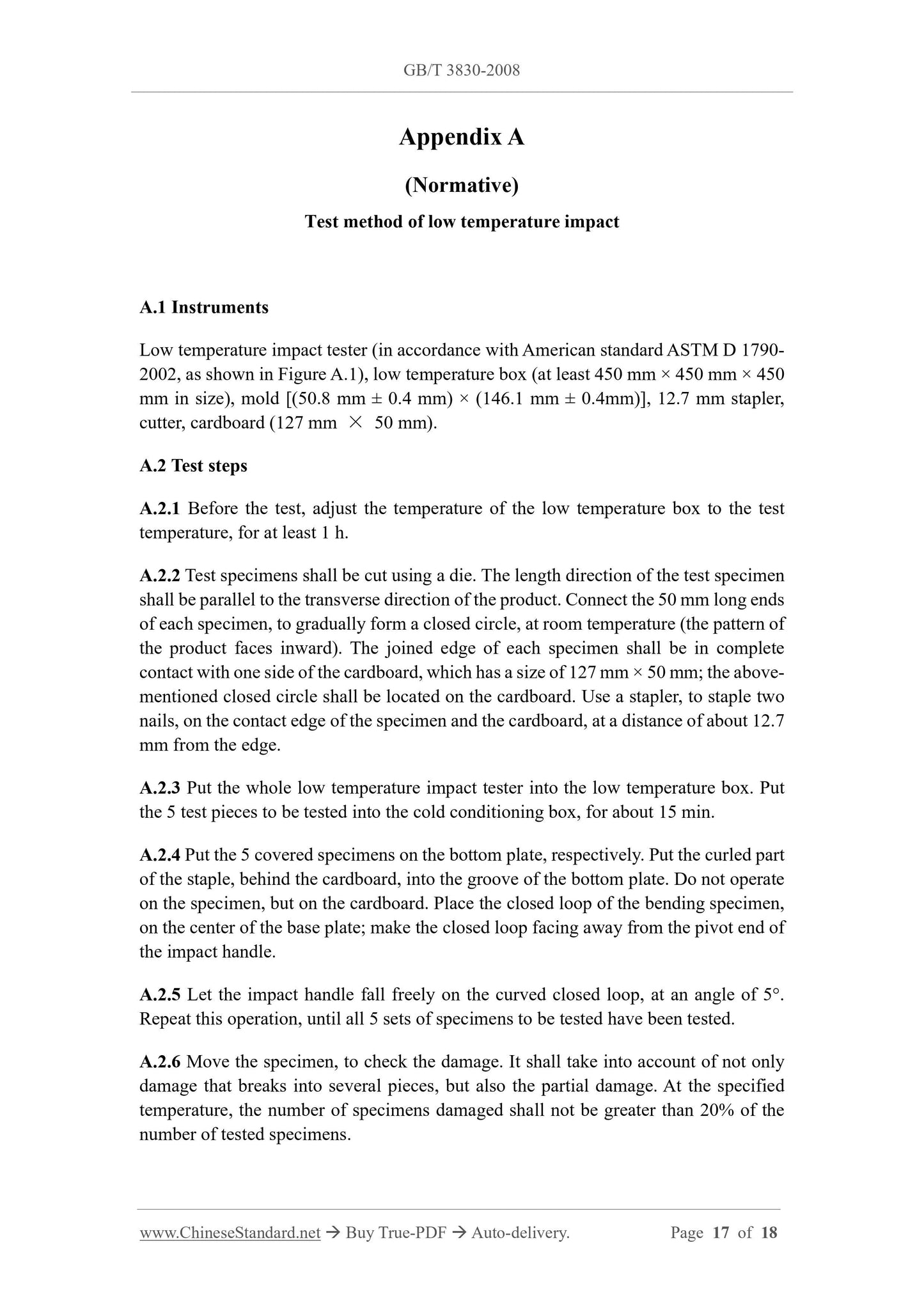1
/
of
7
www.ChineseStandard.us -- Field Test Asia Pte. Ltd.
GB/T 3830-2008 English PDF (GB/T3830-2008)
GB/T 3830-2008 English PDF (GB/T3830-2008)
Regular price
$125.00
Regular price
Sale price
$125.00
Unit price
/
per
Shipping calculated at checkout.
Couldn't load pickup availability
GB/T 3830-2008: Calendered film and sheet from flexible polyvinyl chloride
Delivery: 9 seconds. Download (and Email) true-PDF + Invoice.Get Quotation: Click GB/T 3830-2008 (Self-service in 1-minute)
Newer / historical versions: GB/T 3830-2008
Preview True-PDF
Scope
This standard specifies the product classification, requirements, test methods,inspection rules and signs, packaging, transportation, storage of calendered film and
sheet from flexible polyvinyl chloride.
This standard applies to smooth or shallow pattern calendered film and sheet from
flexible polyvinyl chloride, which are produced by adding plasticizers, stabilizers and
other auxiliaries to suspension-processed polyvinyl chloride resins, through the process
of calendering.
Basic Data
| Standard ID | GB/T 3830-2008 (GB/T3830-2008) |
| Description (Translated English) | Calendered film and sheet from flexible polyvinyl chloride |
| Sector / Industry | National Standard (Recommended) |
| Classification of Chinese Standard | Y47 |
| Classification of International Standard | 59.080.40 |
| Word Count Estimation | 13,190 |
| Date of Issue | 2008-08-19 |
| Date of Implementation | 2009-05-01 |
| Older Standard (superseded by this standard) | GB/T 3830-1994 |
| Regulation (derived from) | National Standard Approval Announcement 2008 No.14 (Total No.127) |
| Issuing agency(ies) | General Administration of Quality Supervision, Inspection and Quarantine of the People's Republic of China, Standardization Administration of the People's Republic of China |
| Summary | This standard specifies the soft calendered PVC film and sheet product categories, requirements, test methods, inspection rules and signs, packaging, transport and storage. This standard applies to the suspension PVC resin plasticizer, stabilizers and other additives to produce a smooth rolling molding method or light pattern soft calendered PVC film and sheet. |
Share
